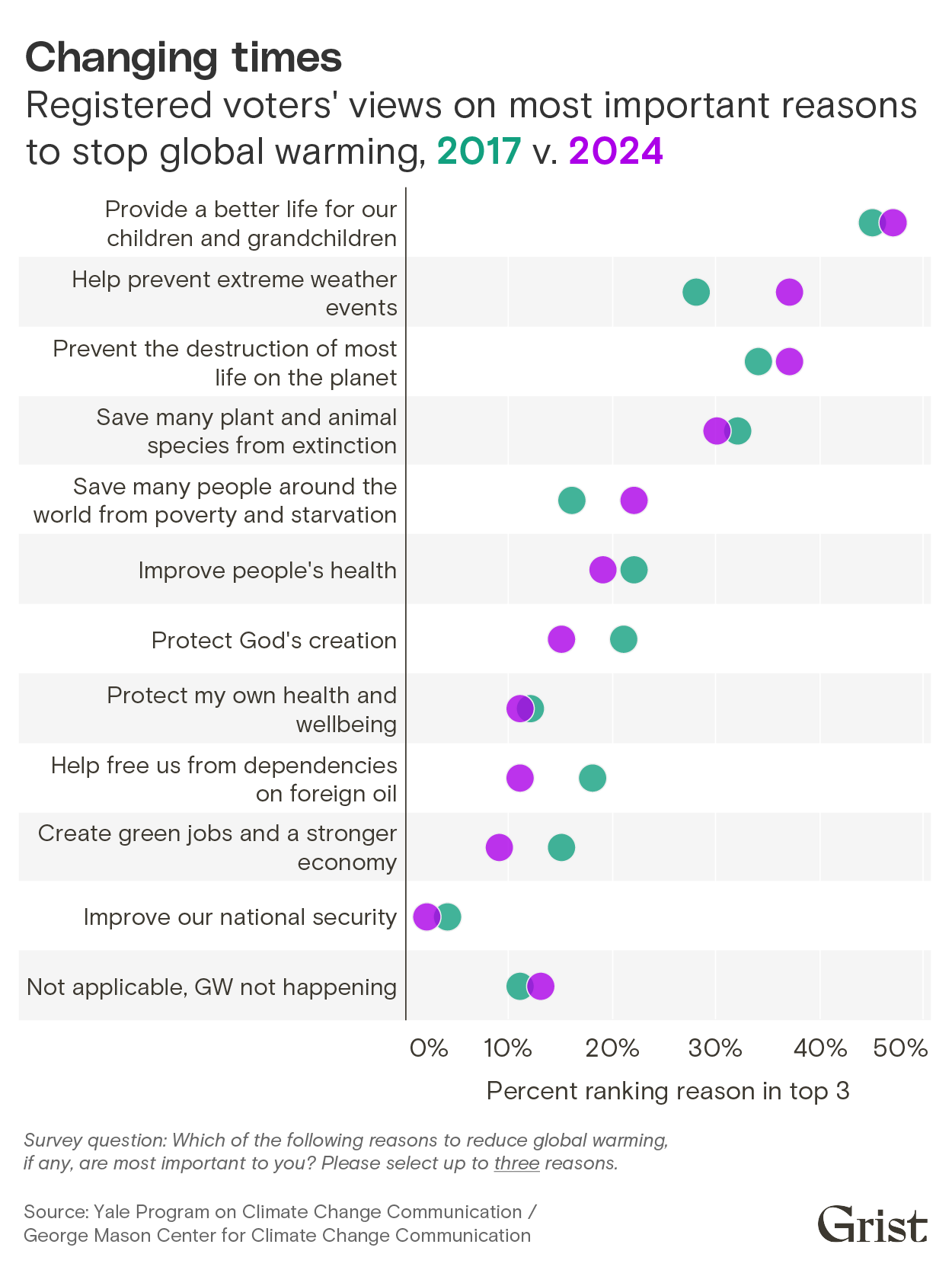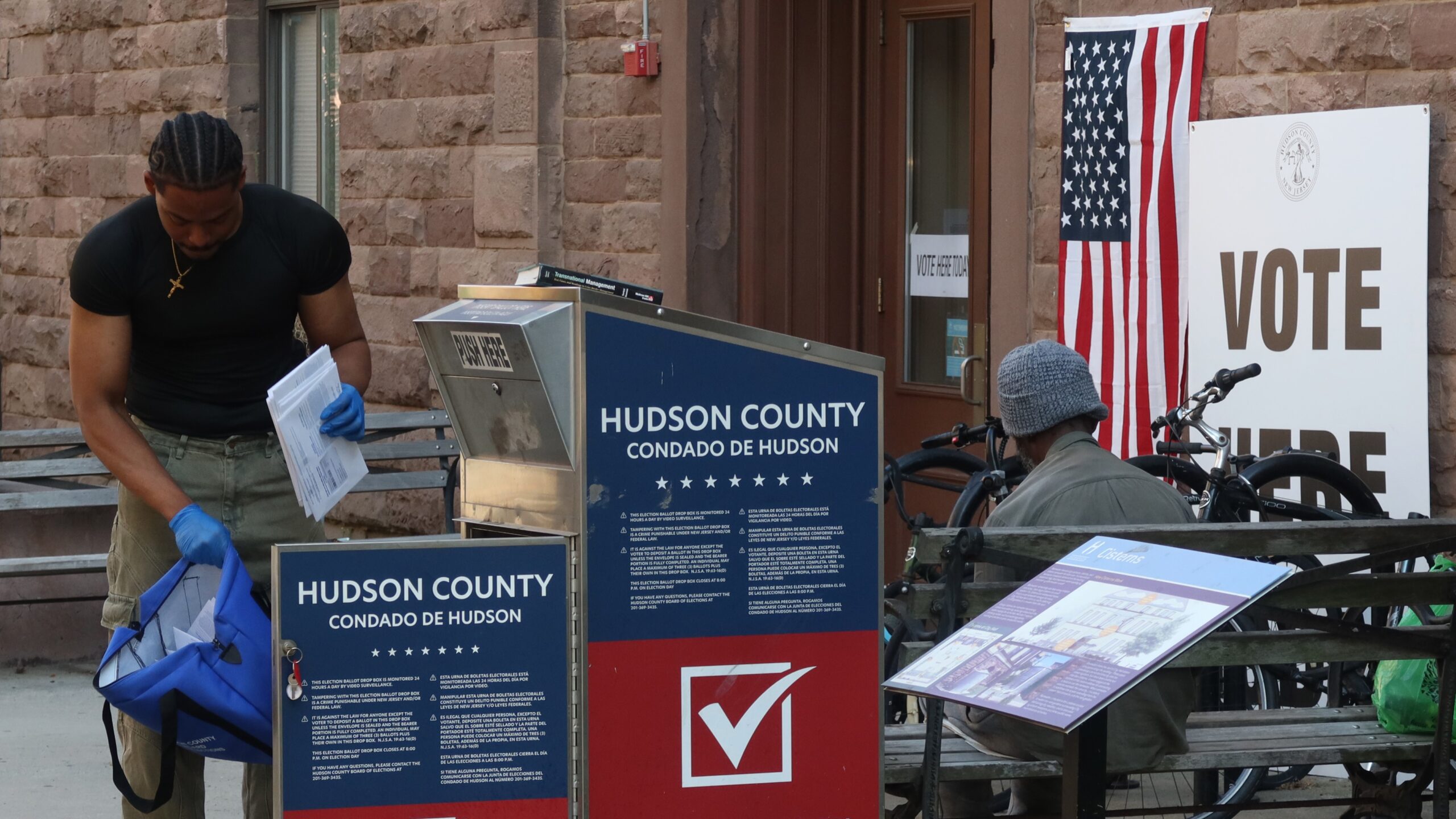Among those concerned about the climate, it’s become something of a self-evident truth that as people suffer more severe and more frequent extreme weather and grapple with global warming’s impact on their daily lives, they’ll come to understand the problem at a visceral level. As a result, they’ll be eager for action. In other words, many climate activists believe that even if advocates and academics can’t sway the hardened opinions of the dismissive, extreme weather can wake anyone up.
The data disagrees.
Over the last seven years, as the effects of climate change have begun to envelop the world in smoke and storm, natural disasters have in fact leapt front of mind for voters when they contemplate the most important reasons to take climate action. Those concerns, however, aren’t shared evenly across the political spectrum.
Preventing extreme weather ranked among the top three reasons to address the crisis among 37 percent of voters surveyed this year, according to an analysis by the Yale Program on Climate Change Communication. That’s up from 28 percent seven years ago. For Anthony Leiserowitz, director of the Yale program, this shift reflects the fact that, while many Americans regard climate change with a certain psychological distance, the increasingly shared experience of smoke-filled skies, life-threatening heat, and earth-cracking droughts means “climate change is no longer distant in time and space,” Leiserowitz said. “It’s right here, right now.”
Mainstream media outlets are making that increasingly clear for their audiences, thanks in large part to the nascent field of attribution science that allows researchers to describe in real time the links between global warming and a given weather system.

The shift Leiserowitz and his colleagues detected was driven in large part by moderate and right-leaning Democrats. In 2017, less than one-third of those voters included preventing extreme weather among their top three reasons for desiring action, but by this year, half of moderate and conservative Democrats ranked it that highly. The opinions of moderate and left-leaning Republicans, however, stayed mostly unchanged, with just under 30 percent of those voters citing extreme weather as a top three reason to reduce global warming. Perhaps surprisingly, extreme weather even increased in relevance among conservative Republicans, with 21 percent listing it as a leading reason compared to just 16 percent in 2017.
But even as extreme weather became increasingly salient among the most conservative voters, far more of them selected the survey option “global warming isn’t happening.” In 2024, a full 37 percent of conservative Republicans denied the reality of climate change, compared to 27 percent just seven years earlier.
“People’s beliefs about climate change are driven predominantly by political factors,” said Peter Howe, an environmental social scientist at Utah State University who has worked with Leiserowitz in the past but was uninvolved in this analysis. The political and social circles a person occupies and the beliefs they hold not only mediate one’s overall opinions about climate change, Howe pointed out, but they influence how that person experiences extreme weather.
When Howe collected and reviewed studies analyzing the connections between extreme weather and personal opinions about climate change, he found that although those already concerned about the crisis often had their anxieties heightened by a natural disaster, those who were dismissive before the event often remained so, ignoring any potential connection to global warming.
When Constant Tra, an environmental economist at the University of Nevada Las Vegas, and his colleagues published a similar study in May, he found that disasters don’t shove people toward concern and alarm in the way he expected. At best, “it kind of nudges people,” he said, but rarely moves someone from an entrenched position of categorical denial, especially when those around them aren’t concerned.
This dynamic reflects a groundbreaking experiment conducted in 1968 in which a college student was placed in a room with two actors. As smoke trickled into the room, if the actors pretended that all was fine, the test subjects rarely reacted with alarm or reported the smoke. In fact, they often assumed it wasn’t dangerous. In the climatic reprise of this “smoky room experiment” currently playing out in America, climate deniers are filling the role of the actors, trying to convince everyone around them that everything’s fine. Over time, those views spread and positions harden.
But the smoky room experiment and Leiserowitz’s own research make something clear: Concern can be contagious, too.
Screaming from the clock towers, however, is not enough on its own, Leiserowitz added. “It’s really important that people have an accurate understanding of the risks,” he said, without exaggeration or ignoring the fact that every little bit matters. That clear-eyed accounting of the risks must also be paired with an exploration of the solutions that exist, that we can implement with ease and efficiency, and that can make a meaningful impact today.

